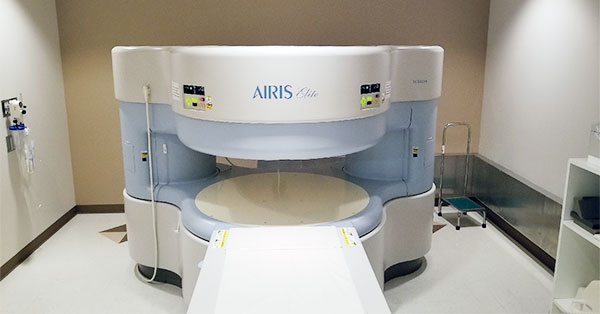
Looking over the wide landscape of secondary market MRIs, a couple of things become very clear: Open MRI is still widely used and in high demand, and the Hitachi Airis II is still one of the most popular open MRIs of them all. With .3 Tesla strength, a permanent magnet, and low annual maintenance costs, it’s a reliable system that meets a variety of imaging needs.
More and more, however, Hitachi Airis Elites are appearing on the secondary market. This is also a .3T open MRI, but with enhanced coils, electronics, and software. Often the Elites are “upgraded” Airis IIs, but there’s no real difference in power between these and a factory-born Elite since the magnets are the same in each model – that is, an “upgraded Elite” is still every bit an Airis Elite!
As Elites become increasingly common, used MRI buyers have begun asking questions about the factors that set these two models apart from one another. Although there are many differences between Airis IIs and Airis Elites, I’ll address the top three as I see them:
Price
As we mentioned earlier, when an Airis II is upgraded to an Airis Elite the magnets stay the same but everything else changes (including the price). The Elites are newer, faster, and in high demand, so if you see one available, act quickly!
Right now, an Airis II, plus installation averages around $145,000. An Airis Elite, plus installation averages around $195,000.
Coils
Only around 1 in 5 Airis II systems on the secondary market have multiple array coils, and even in these cases the most they would have is two: the CTL and the shoulder. Since upgrading is expensive (you have to buy the coil and the software), if you want an Airis II with phased array coils you’re going to have to be patient. However, all Airis Elite systems come equipped with a complement of multiple array coils and the corresponding software. This alone is a significant enhancement.
Fat Separation vs. Fat Saturation
Both Fat “Saturation” (Airis II) and Fat “Separation” (Airis Elite) are features that separate the fat from the rest of the patient’s tissue for more image clarity. However, while Fat Saturation is basically a software option that acts as sort of an “alternative” in the Airis II systems, Fat Separation, which is available on the Elite, makes use of the system’s stronger gradients and additional shim coil to give more of a “true” picture of the joint or other body part being imaged, minus the fat. It’s a noticeable clarity improvement and really makes the Elite stand out over not only the Airis II, but other similar Open MRIs as well.
As we see so often in the medical imaging equipment market, the choice between these two models comes down to finding a balance between features and cost that works for the individual buyer. For those currently working to find that balance we can offer you the following in lieu of a flat-out recommendation:
Although the Airis Elite brings some additional clarity to the table, both it and the AIRIS II offer reliable performance and consistent diagnostic-quality images.
After you sort out those matters of need vs. budget, if you have any more questions about the Airis II or Airis Elite, contact us.

Steve Rentz
Steve Rentz is the Product Manager for MRI Scanners at Block Imaging. Steve's goal is to earn each customer's trust and business by specifically addressing the needs of their unique project. When Steve is not helping customers with their MRI needs, he enjoys running, swimming, and woodworking.




